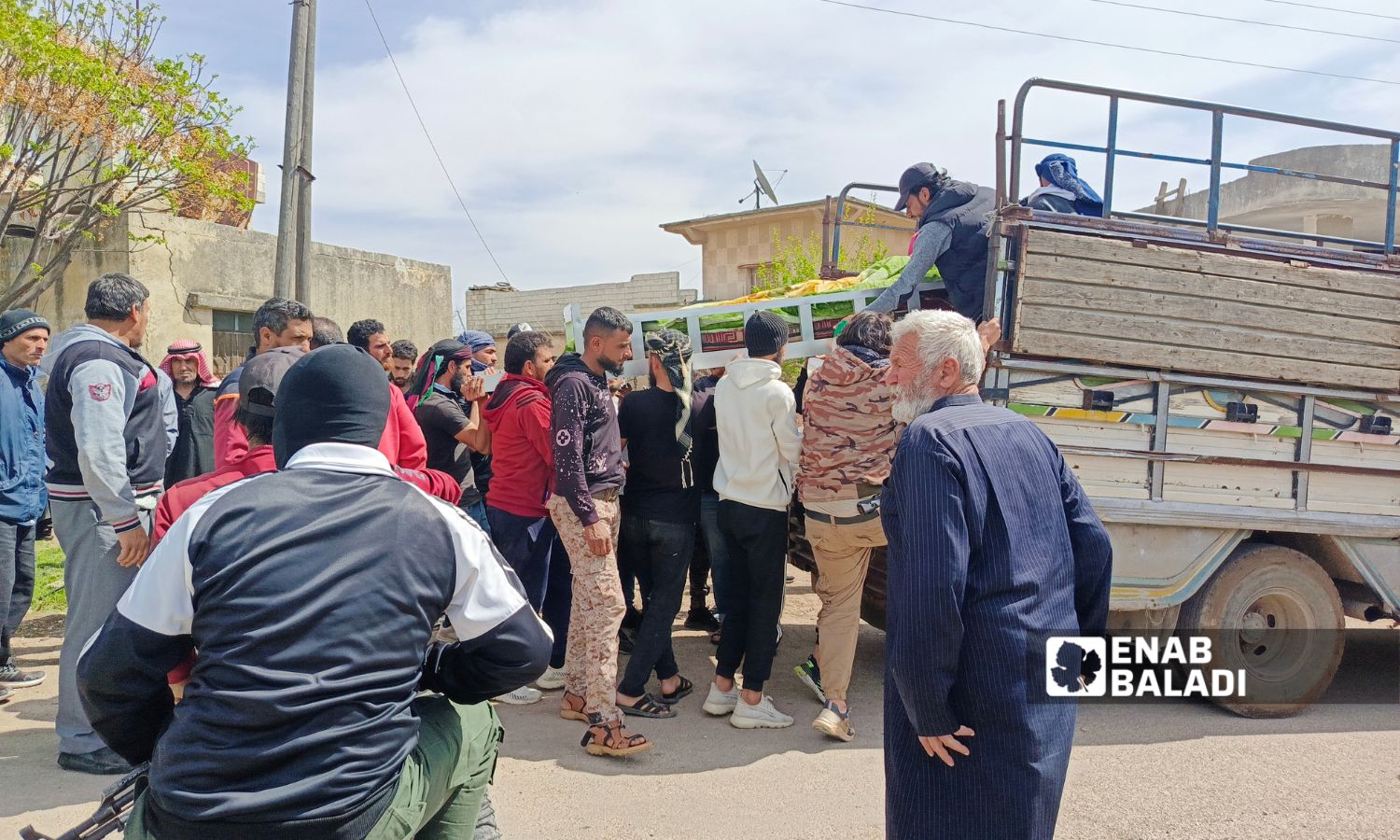



Calm has returned to Koya village in western Daraa countryside, southern Syria, today, Wednesday, March 26, following calls from the village elders for the return of residents who had fled due to Israeli shelling that struck it on Tuesday.
On Tuesday, the residents of Koya buried six victims who lost their lives due to the targeting of Israeli tanks on civilians’ homes after youths resisted the Israeli army’s incursion into the village.
Tensions began following an Israeli army attempt to penetrate the village, prompting young men to open fire, to which Israel responded with shelling on Koya, resulting in casualties and injuries and causing residents to flee, according to an Enab Baladi reporter.
The Israeli escalation has invoked local, Arab, and international reactions condemning the shelling and demanding that Israel return to the disengagement line and adhere to the 1974 agreement.
Koya village is located in western Daraa countryside within the Yarmouk Basin area, which is fertile and significant, situated in the triangle between Syria, Jordan, and Israel, approximately 40 kilometers from the city center.
The population is estimated to be around nine thousand, according to the village’s residents, with most engaged in agriculture, livestock, and beekeeping, and they belong to the Sunni Muslim Arab community.
Koya includes many academics, and many of its people work in the legal and judicial sectors, according to an Enab Baladi reporter.
The area of Koya, including its agricultural lands, is estimated to be about 13,000 dunams (approximately 13 square kilometers), divided into two parts: the elevated area known as Koya al-Manshiyah and the lower area called Koya sl-Balad, where the tensions occurred on Tuesday.
It is about four kilometers from the disengagement line between Syrian lands and Israel, with the village of Ma’riya separating them. It is also less than two kilometers from the Yarmouk River, which serves as a geographical barrier between Syria and Jordan.
With the start of the Syrian revolution and its transformation into armed conflict peaking in 2013, Koya was liberated from the previous regime’s control, though it did not escape its strikes, similar to other areas controlled by the opposition.
There were two military sites in the valley area, one of which belonged to the Haganah (border guards).
Several opposition factions emerged in the Yarmouk Basin and hence Koya, such as the al-Muthana Islamic Movement and the Yarmouk Army, which later evolved into the Khalid Ibn al-Walid Army, accused of being affiliated with the Islamic State.
The area fell under Islamic State control in 2015 until the previous regime regained control in 2018; however, remnants of the Islamic State remained in the area, forming sleeper cells.
After months of regaining control, the previous regime wiped out the remaining cells of the Islamic State and stationed elements of the Seventh Division in the village, which took over homes.
From the moment of the regime’s fall on December 8, 2024, Israel penetrated Syrian territories, surpassing the disengagement line (Bravo) and reached the outskirts of Koya village within days.
Shortly after the regime’s collapse, the Israeli army demanded that residents hand over their weapons to what is known as the “Joint Operations” and that military clothing not be worn in the streets, along with not harboring outsiders in these towns, as well as providing lists of names of local leaders and influential figures in the area.
The tone of the negotiations from the Israeli side conveyed a kind of threat and warning of storming the village and destroying it, according to one of the village elders’ clarifications to Enab Baladi.
The Israeli side linked the implementation of its demands to spare the towns from shelling or incursions.
Hani al-Ghazi, one of Koya’s notable figures, pointed out in a previous conversation with Enab Baladi that the Israelis said, “If you do not comply with our conditions, count your homes, and we will provide you with tents equal to that number,” referring to the forced relocation of residents through shelling.
The Israeli army took control of the Jazira area on December 10, 2024, a high hill overlooking the surrounding villages up to the Jordanian border.
On December 20, 2024, dozens of locals protested against the Israeli presence and went to the Jazira area, but the Israeli army confronted the demonstrators with gunfire, injuring some of them.
On the other hand, the Israeli army’s presence on the Jazira prevented Koya residents from accessing their lands, as Israel imposed the condition on neighboring village residents to register their names when passing through, which met with rejection from the locals.
Israel continues to impose a security reality on the villages of western Daraa countryside, intensifying its recent campaigns of raids and besieging some homes under the pretext of searching for weapons.
In early March, young men from Koya prevented an Israeli patrol from entering the village after setting up a checkpoint for residents against the forces attempting to enter.
On March 11, unknown individuals opened fire at the Israeli point on the Jazira area from a distance of about two kilometers.
The Israeli army responded by shelling Koya village with mortars and sweeping the agricultural lands surrounding the village with gunfire.
if you think the article contain wrong information or you have additional details Send Correction